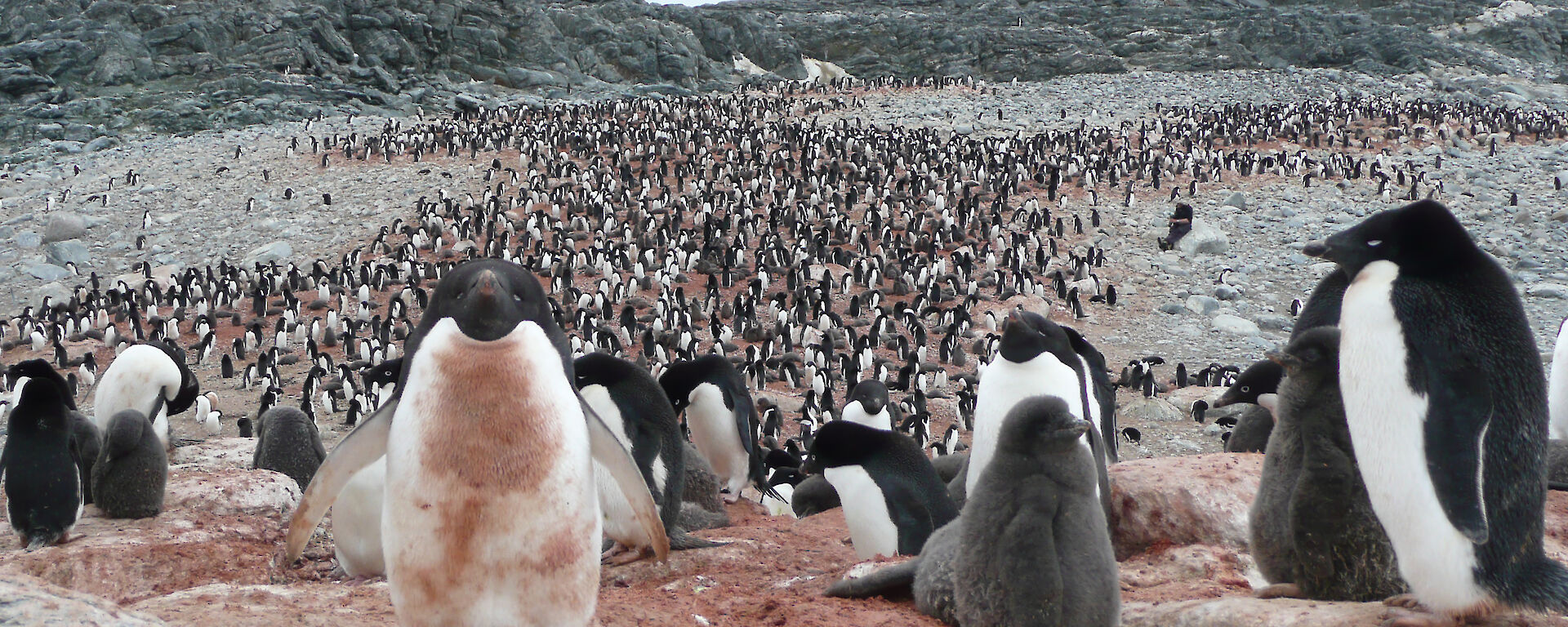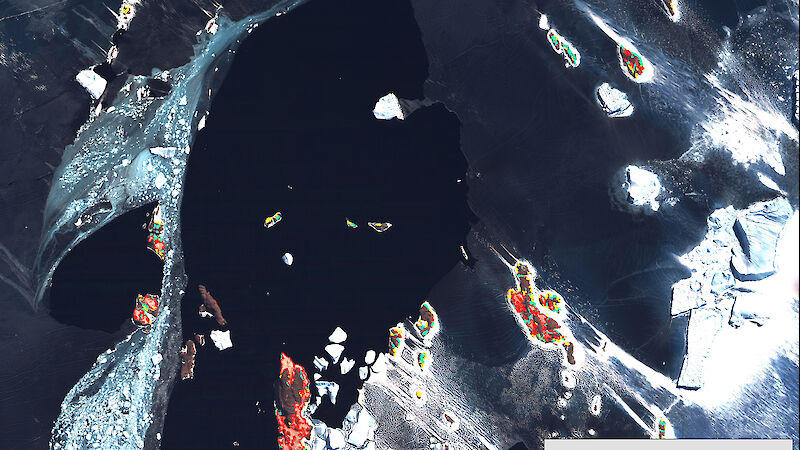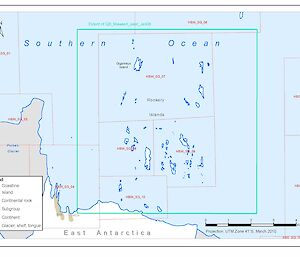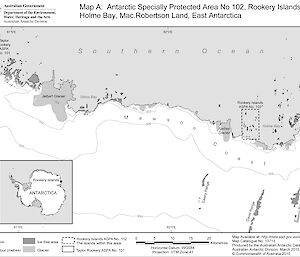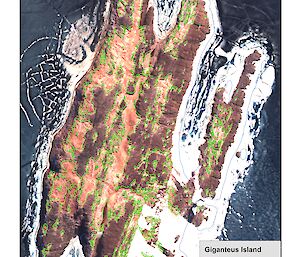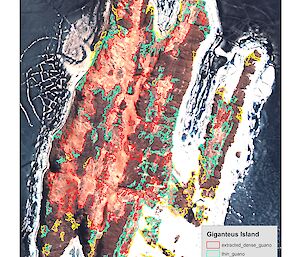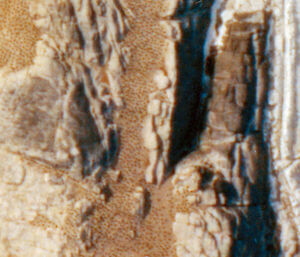Penguin poo, or ‘guano', can provide scientists with a wealth of information, especially when viewed from space. For example, using high resolution satellite images, the spatial extent of a penguin colony — which could extend for kilometres — can be discerned by the guano’s distribution.
For biologists such as the Australian Antarctic Division’s Dr Colin Southwell, this offers a way of developing maps of habitat occupied by penguin colonies. Such maps, used in combination with an estimate of penguin numbers within smaller parts of the habitat, could enable accurate estimates of penguin numbers across very broad regions; such as the whole of East Antarctica.
'Currently, penguin populations can be surveyed in relatively accessible areas using traditional methods, but the most remote regions remain difficult and costly to access,' Dr Southwell says.
'If we can develop accurate habitat maps using satellite imagery of guano deposits, we could design truly large scale surveys that could be applied consistently across very broad regions.'
The feasibility of using satellite images to map penguin habitat over broad scales was recently explored in a pilot study by remote sensing analyst, Angela Bender, of the Australian Antarctic Data Centre.
Angela used QuickBird satellite images covering islands along the Mawson coast, some of which were surveyed for Adélie penguin colonies in 2007 and 2009. The QuickBird satellite has a spatial resolution of 60cm and collects ‘multispectral’ imagery by detecting different wavelengths of light, including visible and near infra-red, reflected by different land cover, such as rocks and vegetation (it also collects black and white images). Guano appears as bright areas in multispectral images, due to its high near-infrared reflectance.
'Rookery Island and Giganteus Island, two of the larger islands within the Rookery Islands Group, were used to test the feasibility of using satellite images,' Angela says.
'We used these islands because the bright areas in the satellite images, which are assumed to be guano and are clearly discernable from the surrounding rocks and ice, also fall within the colony boundaries that were surveyed using a handheld GPS in 2007.'
Definiens Developer 7 software was used to extract and analyse the guano using ‘object-based image analysis’ (OBIA). This technique aims to simulate the way humans visually analyse imagery. It uses the spectral reflectance, shape, size, texture and contextual properties of objects, such as rocks, vegetation, or areas of guano, to classify them as such. This allowed Angela to separate and gradually refine areas of guano, from other objects. She was also able to classify areas of guano into ‘dense, thin and sparse'.
The dense and thin areas of guano extracted using OBIA aligned well with a guano map of the area that had been manually digitised from the satellite images. However, the ‘sparse’ guano was not visibly discernable in the manual mapping.
Angela says that the results of the pilot study showed that OBIA is a feasible method for separating and extracting environmental data from a small number of satellite images. However, broader scale mapping with many images would require significantly more computing power. On-the-ground measurements of actual guano (density and spectral reflectance) would also help to answer other questions raised by the study.
'The time limitations of the pilot study precluded some important questions being answered; for example, is guano more or less detectable with krill or fish diets; are new or small colonies less detectable because there’s less guano; can old guano be mistaken for fresh guano; and does satellite imagery give consistently reliable results across these variations?' Angela says.
Angela hopes to incorporate spectral reflectance data from actual guano in the field ('ground-truth data') into future analyses. She is also keen to test the usefulness of satellite imagery and aerial photos to count individual penguins based on ‘texture'.
'Texture based algorithms could potentially be used to identify the texture of penguin colonies when the birds are on their nests,' she says.

